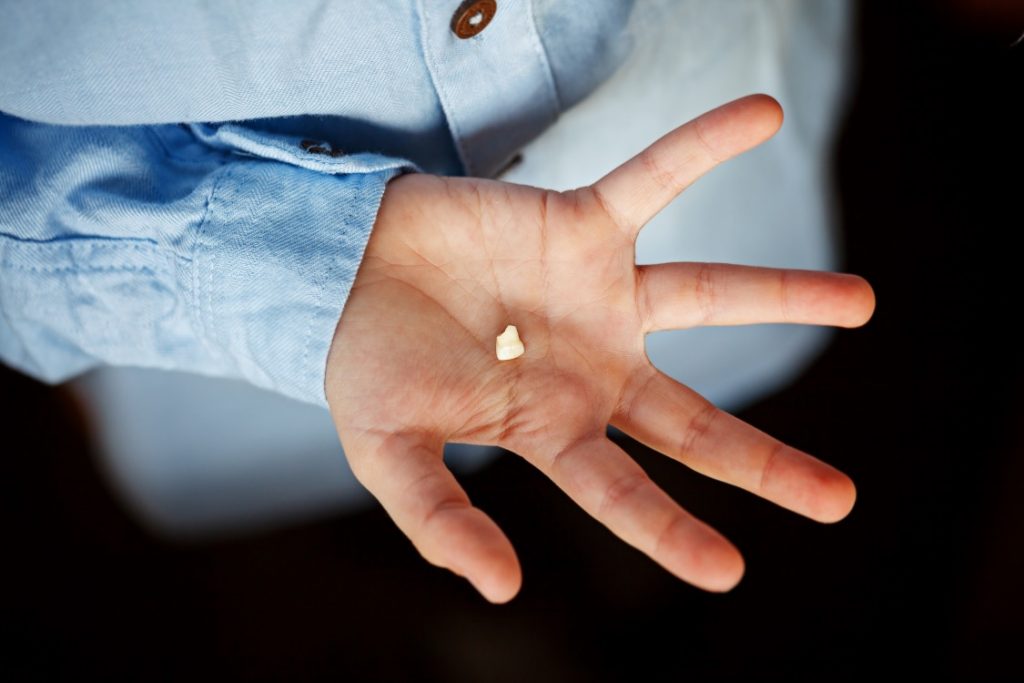No comments yet.
RSS feed for comments on this post.
Sorry, the comment form is closed at this time.

Did you know that an estimated 5 million teeth are knocked out each year? The majority of these injuries occur while playing sports and come with an annual cost of around 500 million dollars. If you or a loved one knocks out a tooth, acting quickly and taking the right steps will give you the best chance of saving it. One tip you may have heard is to put a knocked-out tooth in a glass of milk until you can see an emergency dentist. But is that actually helpful and, if so, how does it work? Keep reading to find out!
Your best bet is actually to put the tooth back in its socket (more on that below). But if that isn’t possible, putting the tooth in a glass of milk is a much better choice than water, which can cause the cells on the root to swell and burst. Milk contains certain substances that help the tooth stay “alive,” including sugars that the cells need to survive, proteins to maintain the right balance of acids, and antibacterial agents.
Above all, keeping the tooth moist is crucial. Depending on the circumstances, you can do this by:
Again, it’s important to act quickly and try to see an emergency dentist within an hour (if that isn’t possible, go to an urgent care center or hospital). Being seen in this timeframe is your best chance of saving the tooth.
After you’ve called to schedule the first available dental appointment, do the following:
Hopefully, you and your loved ones never have to deal with a knocked-out tooth! But, just in case, these tips will help you save it and maintain a healthy smile for many years to come.
Dr. Sheri McIntosh has 15 years of experience as a general and emergency dentist and is known for her warm, compassionate chairside manner. In any type of emergency, she’s able to put her patients at ease and get them out of pain as quickly as possible. If you have any questions about treating a knocked-out tooth, she can be reached via her website.
No comments yet.
RSS feed for comments on this post.
Sorry, the comment form is closed at this time.